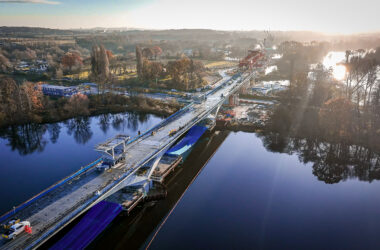Engineers from the University of the West of England (UWE), Bristol, have showcased a ‘Living Brick’ in Venice. The bricks contain a microbial fuel cell filled with natural –potentially programmable– microorganisms, which can act like a digestive system for buildings.

The brick is part of the €3.2m Living Architecture (LIAR) project which has seen teams of Scientists and Engineers across Europe from four universities (UNEW, UWE, CSIC, UNITN), and two small businesses (EXP, LSG) attempt to reimage the most basic structural component of human dwelling.
The idea is to allow the very building blocks of the future structures to extract valuable resources from sunlight, wastewater and air and in turn, generating oxygen, proteins and biomass through the manipulation of their interactions.
Rachel Armstrong from Newcastle University, the project co-ordinator, said “we are very excited to be able to show off the first prototype of the living brick. There is so much potential in this project to change the way we think about how we recycle the waste from our home and what the places we live in can do”.
The final goal of the project will be to produce a modular bioreactor-wall. However, demonstrating a working ‘living brick’ is the first step in proving the principles of microbial fuel cell technology and synthetic ‘consortia’ of microbes.
The team hope that the bioreactor will be able to fulfil a number of useful roles by producing oxygen, proteins and fibre from wastewater and air. These products could be used for micro-agriculture in domestic, public and office environments. Improving building performance through resilience and resource recycling.
However, on a more fundamental level, the project represents a shift in how we think about building and the difference between built environments and local ecosystems.
How it Works
The technology is based on the principles of microbial fuel cells (MFCs). These cells can process organic matter by combing micro-agriculture (harvesting microorganisms) w/ synthetic biology and unconventional computing.
The walls themselves would be assigned different purposes based on their ‘feedstock’ (i.e. what it can process). This would allow engineers to assign each wall a different task and create blocks of reactors which would operate together.
While LIAR is still at an early stage, the team hope they can provide a platform for the exploitation of synthetic biology principles to engineering synthetic microbial communities








